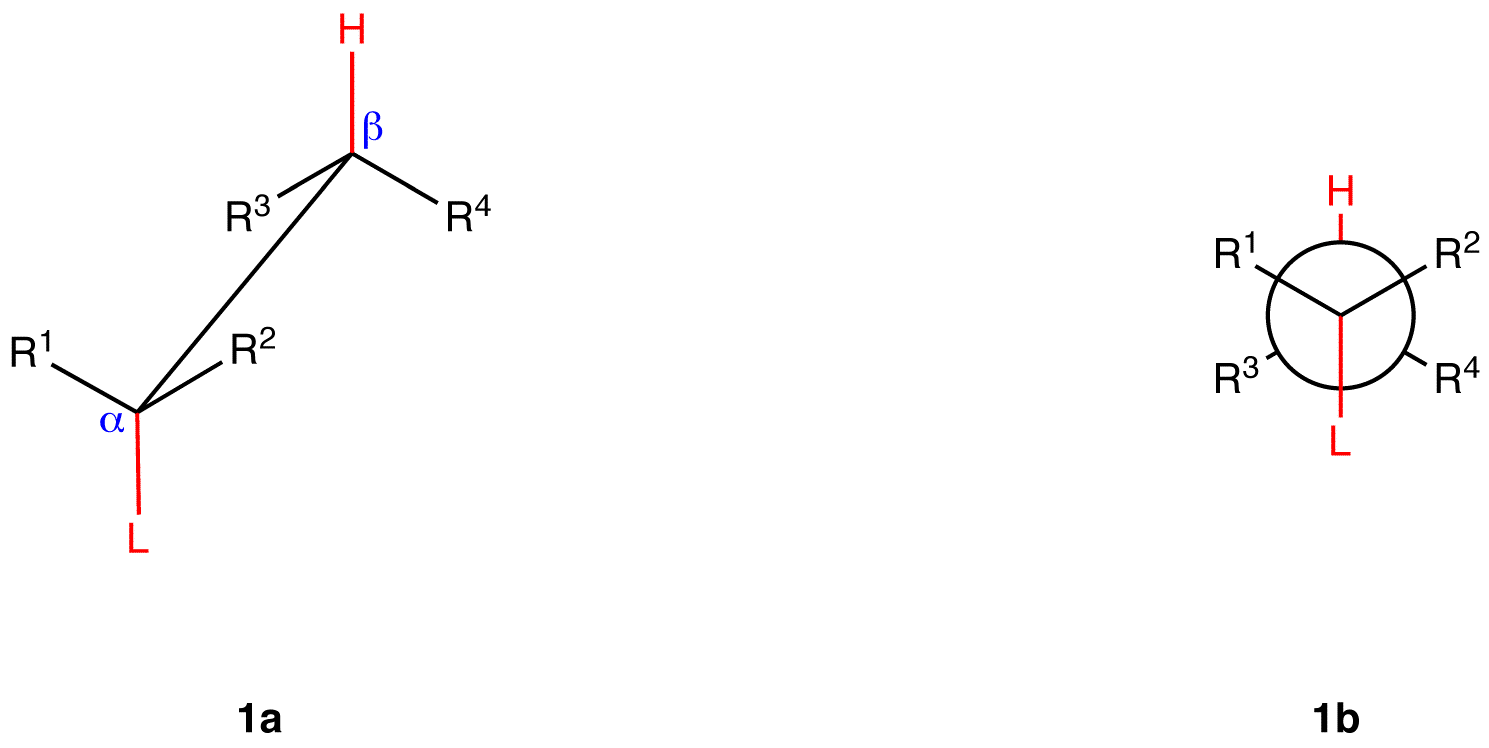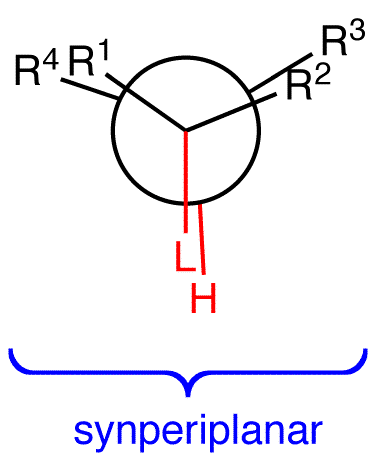Antiperiplanar
( \newcommand{\kernel}{\mathrm{null}\,}\)
1,2-elimination via E2 mechanism evidently occurs preferentially from a specific staggered conformation of the substrate, which is shown below as a saw-horse formula (1a) and as a Newman projection (1b).

(L is a leaving group; R1—R4 could be hydrogen atoms, alkyl groups, aryl groups, or any combination thereof).
In 1b, the dihedral angle between the leaving group and the highlighted beta hydrogen is 180°, and the alpha carbon-leaving group bond and the beta carbon-highlighted hydrogen bond are parallel to each other. In conformation 1, the leaving group and the highlighted beta hydrogen are said to be antiperiplanar, antiparallel, or anticoplanar.

E2 reactions occur from the eclipsed conformation (2) of the substrate in which the leaving group and a beta hydrogen are synperiplanar (synparallel, syncoplanar) only if the molecule can not assume the conformation 1.

2



